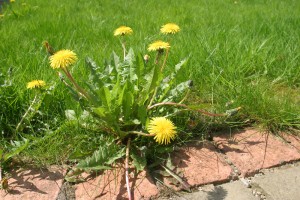 The crisp days of fall will soon be here, but a long dry summer has left many homeowners looking out on lawns and gardens overtaken with invasive weeds and vines. A yard full of these noxious plants is sure to make it difficult to enjoy the cooler outdoor temperatures.
The crisp days of fall will soon be here, but a long dry summer has left many homeowners looking out on lawns and gardens overtaken with invasive weeds and vines. A yard full of these noxious plants is sure to make it difficult to enjoy the cooler outdoor temperatures.
In 2012, the nation faced one of the hottest summers on record in the last 60 years. With more than two thirds of the country experiencing severe to extreme drought, conditions were ideal for pesky weeds to flourish.
Weeds like dandelions, crabgrass and clover easily tolerate hot temperatures and dry soil, overtaking lawns and gardens and lingering throughout the cooler fall months. Ivy and other aggressive vines thrive in the summer heat, climbing and covering bushes and trees and ultimately killing the plants underneath with their shade.
Left untreated, invasive plants can quickly become health and safety hazards. Kudzu can grow up to a foot per day, causing tree limbs to break under its weight, damaging homes and outdoor living spaces. Common grass weeds like nettles and thistles sting and prick the skin, and contact with dangerous plants like poison oak, ivy and sumac cause moderate to severe allergic reactions in almost all people.
“Fall herbicide treatments are the most effective way to eliminate unattractive and potentially harmful plants from lawns and gardens so that those spaces can be enjoyed throughout the cool fall months,” says Aaron Hobbs, president of RISE (Responsible Industry for a Sound Environment), a national organization representing the manufacturers, formulators and distributors of pesticide and fertilizer products.
“This is the best time of year to eliminate invasive plants,” Hobbs adds. “Weeds move the products of photosynthesis like water, glucose and oxygen to their roots for winter food storage in the fall, enabling the roots to soak up herbicides as well.” Two to three treatments are usually all that is needed to completely destroy these types of plants.
Effective herbicide options exist for every type of weed and vine. The Environmental Protection Agency rigorously tests herbicides for potential human health and environmental impact before they can be registered and sold for use. As with all pesticides, users should always read labels and use and store products accordingly.
With just one or two follow-up treatments after an initial fall herbicide application, invasive plants are eradicated at the root, and people can take back their lawns and gardens to enjoy the beauty of fall.
Courtland Building Company would love to help you plan your green home, call us today: (281) 932-4494
Visit our website: www.courtlandbuildingcompany.com Follow Us on Facebook – Twitter – LinkedIn– Google Plus


